Curved vs. Flat Monitors: From Gaming to Work
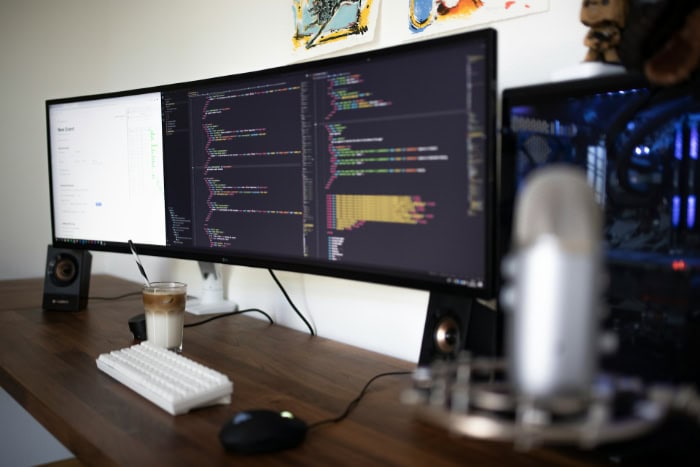
Choosing between curved and flat monitors feels like selecting between a sports car and a luxury sedan – each offers distinct advantages that transform your daily experience. Beyond marketing hype and technical specifications lies a genuine difference in how these displays shape our interaction with digital content.
Curved monitors emerged as bold innovators, challenging decades of flat screen dominance with promises of enhanced immersion and comfort. Yet flat monitors continue to excel in professional environments, maintaining their position through consistent performance and versatility.
As prices become more competitive and technology advances, the choice extends beyond simple preferences.
Visual Experience
Monitor choice significantly influences how we perceive digital content, with curved and flat displays offering distinct visual experiences. Both designs present unique advantages and limitations that affect everything from casual browsing to professional work.
Immersion and Field of View
Curved monitors create a more natural viewing arc that mirrors human peripheral vision. By wrapping the display around your field of view, curved screens reduce the distance between your eyes and the screen edges, making content feel more immediate and engaging.
This curvature brings side content closer to your natural line of sight, reducing the need for constant eye refocusing.
The depth perception on curved monitors adds a subtle but noticeable 3D-like effect, particularly beneficial in gaming and multimedia content. Racing games and flight simulators feel more authentic as the curved display creates a cockpit-like environment.
However, this immersive effect depends heavily on viewing position – users must sit centered at an optimal distance to experience the full benefit.
Flat monitors maintain consistent viewing distances across the entire screen, offering predictable image presentation regardless of sitting position. They provide excellent flexibility for multiple viewers, making them ideal for collaborative work or shared entertainment.
Image Quality
Color accuracy and consistency present different challenges for both display types. Flat monitors typically offer more uniform color reproduction across the entire screen surface.
Professional photographers and graphic designers often prefer flat displays because they maintain consistent color representation from edge to edge.
Curved monitors face unique challenges with color uniformity, especially at the edges where the curve can affect how light reaches the viewer. However, modern curved displays incorporate advanced technology to compensate for these potential inconsistencies.
Reflection handling varies significantly between the two designs. Flat monitors reflect light in predictable patterns, making it easier to position the screen to minimize glare.
Curved displays can either help or hinder reflection management – while they can spread reflections across a wider area, reducing their intensity, they might also catch light from more angles, potentially creating multiple reflection points.
Distortion considerations play a crucial role in display choice. Flat monitors present content exactly as designed, with straight lines remaining straight across the entire screen.
Curved displays may introduce subtle geometric distortion, particularly noticeable when viewing architectural drawings or grid-based designs. This effect becomes more pronounced with steeper curvature ratios and larger screen sizes.
The viewing sweet spot differs notably between the two designs. Flat monitors maintain consistent image quality across wider viewing angles, making them more versatile for group viewing.
Curved displays offer optimal visual experience within a more limited viewing arc, though they excel at creating an engaging single-user experience when viewed from the ideal position.
Ergonomics and Comfort
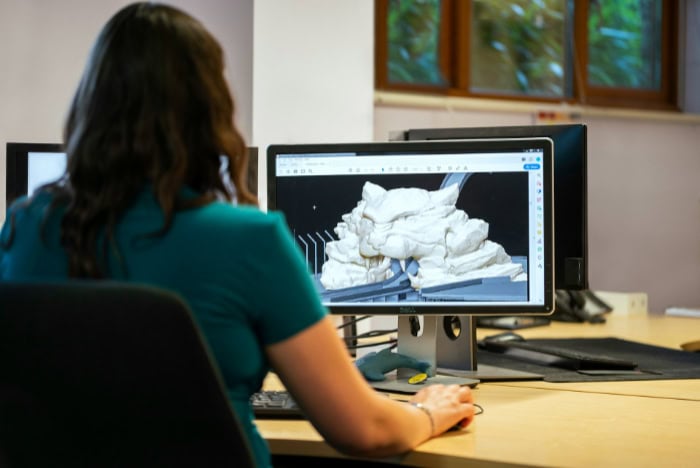
The physical impact of monitor choice extends far beyond visual quality, directly affecting user comfort and workplace efficiency. Both curved and flat monitors present distinct ergonomic considerations that can significantly influence long-term comfort and productivity.
Physical Comfort
Curved monitors aim to reduce eye strain by maintaining a more consistent viewing distance from the center to the edges of the screen. This design mimics the natural curvature of the human eye, potentially reducing the frequency of eye muscle adjustments throughout the workday.
Users often report feeling less fatigued after extended viewing sessions, particularly when working with ultra-wide curved displays.
The optimal viewing distance varies between curved and flat monitors. Curved displays generally perform best at specific distances where the curve's radius complements natural eye movement.
Too close or too far from the ideal position can negate the ergonomic benefits. Flat monitors offer more flexibility in viewing distance, though they still require proper positioning to minimize neck strain and maintain good posture.
Natural eye movement patterns differ significantly between the two designs. Curved monitors guide the eyes in a more circular motion, following the screen's contours.
This can feel more natural during extended use, especially when scanning across wide documents or multiple windows. Flat monitors require more lateral eye movement, which some users find more tiring during long work sessions.
Workspace Adaptation
Desk placement requirements vary considerably between curved and flat monitors. Curved displays typically demand more thoughtful positioning due to their specific viewing sweet spots.
They need adequate depth to accommodate their curve and often require more precise placement relative to the user's seated position. Flat monitors prove more forgiving, offering greater flexibility in desk placement and viewing angles.
Multi-monitor configurations present unique challenges and opportunities for both types. Flat monitors easily align edge-to-edge, creating seamless multi-display setups with minimal gaps or bezels.
Curved monitors can create impressive wraparound configurations, though matching curves and managing the transitions between screens requires careful planning.
The combination of curved and flat monitors in the same setup often results in awkward transitions and inconsistent viewing experiences.
Wall mounting considerations differ significantly between the two designs. Flat monitors mount flush against walls, creating clean, space-efficient installations.
Their straightforward mounting requirements make them compatible with most standard VESA mounts. Curved monitors require more specialized mounting solutions to accommodate their shape.
The curve can create noticeable gaps between the wall and the screen's edges, potentially affecting the aesthetic appeal of wall-mounted setups. Some curved monitors may need additional clearance or articulating arms to achieve optimal viewing positions when wall-mounted.
The depth requirements of curved monitors might limit placement options in smaller workspaces, while flat monitors generally adapt more easily to space constraints. However, curved ultra-wide monitors might eliminate the need for multiple displays, potentially saving desk space despite their larger footprint.
Professional Applications
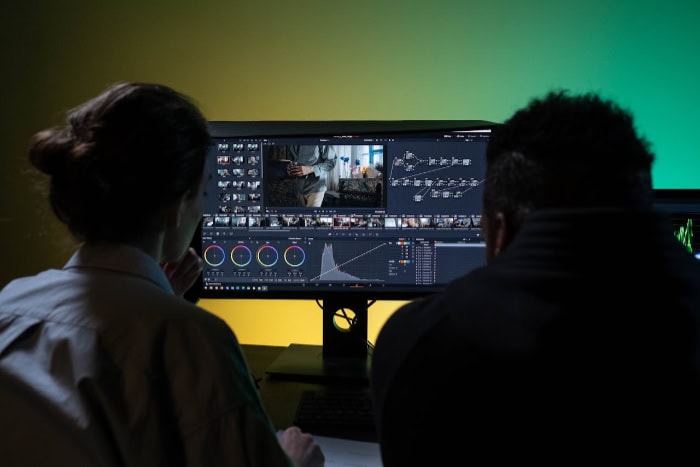
Professional work demands specific monitor characteristics that can enhance productivity and creative output. The choice between curved and flat monitors can significantly impact workflow efficiency and the quality of creative work across various professional fields.
Content Creation
Graphic designers face unique considerations when choosing between curved and flat displays. Flat monitors traditionally excel in maintaining straight lines and precise geometric shapes, crucial for layout design and typography work.
Their consistent color reproduction and lack of geometric distortion make them reliable tools for print-focused design work. However, curved monitors offer advantages for designers working on panoramic or immersive designs, providing a natural perspective for environmental graphics and wide-format projects.
Video editing performance varies between the two display types. Flat monitors remain popular among video editors due to their accurate representation of footage without spatial distortion.
Timeline editing on curved displays can feel more intuitive, especially on ultra-wide models where the curve helps editors maintain focus across lengthy timelines. Color grading work typically favors flat displays for their consistent color reproduction and easier calibration process.
CAD and 3D modeling professionals experience distinct advantages with each display type. Curved monitors enhance the perception of depth in 3D environments, making spatial relationships more apparent during modeling tasks.
This curved perspective can benefit architects and industrial designers working on complex three-dimensional structures. Flat monitors maintain precise straight lines and angles, essential for technical drawings and architectural plans where geometric accuracy is paramount.
Productivity
Document editing and reading experiences differ significantly between curved and flat displays. Curved monitors can reduce eye strain during long reading sessions by maintaining consistent viewing distances across the screen width.
However, flat monitors excel in displaying multiple documents side by side without distortion, particularly important for legal professionals and writers comparing texts.
Multitasking efficiency takes different forms on each display type. Curved ultra-wide monitors create an immersive workspace where multiple windows feel naturally positioned within the user's field of view.
The curved surface helps maintain focus across various applications without constant head movement.
Flat monitors offer straightforward window management with predictable spacing and alignment, particularly beneficial when working with grid-based layouts or standardized window arrangements.
Screen real estate utilization varies between the two formats. Curved displays excel at maximizing ultra-wide screen spaces, making them particularly effective for timeline-based applications and parallel task management.
The curve helps users maintain awareness of peripheral content without turning their heads. Flat monitors provide more versatile space management options, especially in multi-monitor setups where precise alignment between screens is crucial.
The effectiveness of virtual desktops and window management software also differs between the two formats. Flat monitors work seamlessly with traditional window snapping and grid-based organization tools.
Curved displays might require specialized software to optimize window placement along the curve, though many users find the natural segmentation created by the curve helps organize different work areas intuitively.
Gaming and Entertainment
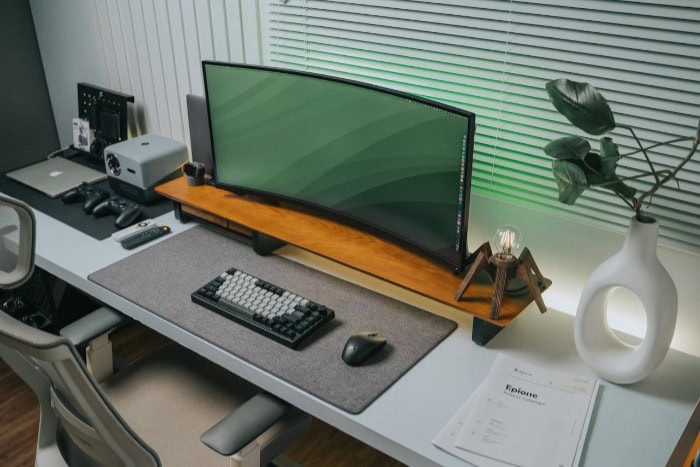
Gaming and media consumption represent some of the most demanding use cases for modern displays. Both curved and flat monitors offer distinct advantages that can enhance or detract from the entertainment experience, depending on the specific content and user preferences.
Gaming Performance
Competitive gaming demands specific monitor characteristics that can influence player performance. Flat monitors remain popular in esports due to their predictable image presentation and consistent pixel density across the entire screen.
Professional gamers often prefer flat displays for competitive titles like first-person shooters and MOBAs, where spatial accuracy and quick target acquisition are essential.
Racing and simulation games showcase the strengths of curved monitors particularly well. The curved display creates a more natural field of view that mirrors the cockpit experience in racing simulators.
Flight simulators and space games benefit from the enhanced peripheral vision and depth perception offered by curved screens, creating a more convincing sense of speed and movement.
The wraparound effect makes it easier to spot approaching corners or obstacles in racing games without turning your head.
Response time and refresh rates remain crucial factors regardless of screen curvature. Both curved and flat gaming monitors can achieve impressive specifications, with many models offering 144Hz, 240Hz, or even higher refresh rates.
The curvature itself doesn't impact these technical aspects, though some curved gaming monitors might command higher prices for equivalent specifications. Variable refresh rate technologies like G-Sync and FreeSync perform equally well on both display types, ensuring smooth gameplay without screen tearing.
Media Consumption
Movie and video viewing experiences differ significantly between curved and flat displays. Curved monitors can enhance the cinematic experience by creating a more immersive viewing environment, similar to premium movie theaters.
This effect works particularly well with ultra-wide aspect ratios and larger screen sizes. However, flat monitors excel at maintaining consistent image quality for multiple viewers, making them more suitable for group viewing sessions.
Aspect ratio compatibility presents unique challenges for both display types. Flat monitors handle various aspect ratios predictably, displaying letterboxing or pillarboxing without distortion.
Most streaming content and broadcast television comes in standard 16:9 format, which displays naturally on conventional flat screens. Curved displays can make black bars more noticeable, especially when viewing 16:9 content on ultra-wide screens.
This mismatch between content and screen formats becomes particularly apparent on curved displays, as the curve emphasizes unused screen space.
While some movies are available in wider formats like 21:9 (particularly on Blu-ray or specialized streaming releases), the vast majority of streaming content remains optimized for 16:9 displays.
Media players and streaming services sometimes provide screen-filling options, but these solutions often crop or stretch the image, compromising the original composition.
The viewing sweet spot becomes particularly important for media consumption on curved displays. Single viewers positioned at the optimal distance enjoy an enhanced experience, but off-angle viewing can diminish the immersive effect and potentially create distortion.
Flat monitors maintain more consistent image quality across various viewing positions and distances, making them more versatile for different room layouts and viewing arrangements.
Technical Considerations
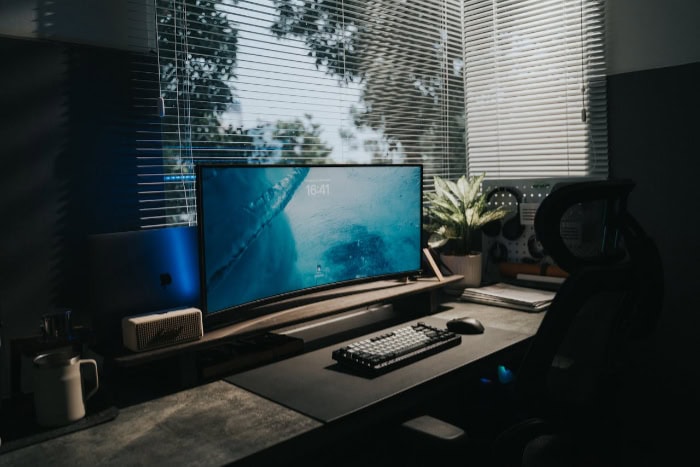
The technical aspects of curved and flat monitors extend beyond their physical appearance, encompassing various technological factors that affect performance, compatibility, and overall user experience. These considerations play a crucial role in both purchase decisions and long-term satisfaction.
Display Technology
Panel types significantly influence monitor performance regardless of curvature. IPS panels dominate the flat monitor market, offering excellent color accuracy and wide viewing angles, making them ideal for professional work.
VA panels are commonly used in curved monitors due to their high contrast ratios and good color reproduction, though they may exhibit slight color shifting at extreme angles. TN panels, while less common in curved displays, remain popular in competitive gaming monitors for their fast response times.
Resolution impacts both curved and flat monitors differently. On curved displays, higher resolutions become particularly important as they help maintain image clarity across the curved surface.
Ultra-wide curved monitors often require higher pixel counts to maintain sharp image quality, especially at larger sizes. Flat monitors handle various resolutions more predictably, with pixel density remaining consistent across the entire screen surface.
Screen size relationships prove crucial when considering curved monitors. The curvature radius (measured in R, such as 1000R or 1800R) becomes more significant as screen size increases.
Larger curved monitors require more careful consideration of curvature radius to maintain comfortable viewing. Flat monitors scale more linearly, with size increases primarily affecting viewing distance and desk space requirements rather than fundamental viewing geometry.
Hardware Requirements
Graphics card compatibility becomes particularly important for curved ultra-wide monitors. These displays often feature higher resolutions and refresh rates, demanding more powerful graphics cards to maintain smooth performance.
While flat monitors also benefit from capable graphics hardware, their typically standard resolutions and aspect ratios place less strain on graphics cards. Gaming at high refresh rates on curved ultra-wide displays may require top-tier graphics cards to maintain consistent frame rates.
Connection standards vary between monitor types, though both curved and flat displays generally support modern interfaces. DisplayPort and HDMI remain standard across both formats, with newer models incorporating USB-C connectivity.
Ultra-wide curved monitors might require specific versions of these standards to support their full resolution and refresh rate capabilities. Some curved gaming monitors need DisplayPort 1.4 or HDMI 2.1 to achieve maximum performance specifications.
Power consumption differences emerge primarily from screen size and panel technology rather than curvature itself. However, curved ultra-wide monitors typically draw more power due to their larger sizes and enhanced features.
LED backlighting efficiency remains similar between curved and flat displays using the same panel technology. Modern power management features, including adaptive brightness and power-saving modes, function equally well on both display types.
The physical design of curved monitors may require additional cooling considerations due to their form factor. Some models incorporate more sophisticated thermal management systems to maintain optimal performance across the curved panel.
Flat monitors generally feature simpler cooling solutions due to their straightforward construction and heat distribution patterns.
Conclusion
Both curved and flat monitors excel in specific scenarios, with neither design claiming absolute superiority. Curved displays shine in gaming and immersive entertainment, offering enhanced depth perception and reduced eye strain during long sessions.
Professional users focused on precision work, such as graphic design and photo editing, often benefit from flat monitors' consistent geometry and color accuracy. Personal preferences, workspace constraints, and primary usage patterns should guide monitor selection.
Gaming enthusiasts might gravitate toward curved displays for racing simulators while maintaining flat panels for competitive titles. Content creators could mix both types – curved for timeline-based work and flat for color-critical tasks.
Budget-conscious buyers should note that curved monitors typically command premium prices for similar specifications. Modern display technology ensures excellent performance from both designs, making personal comfort and intended use more significant than technical specifications alone.


